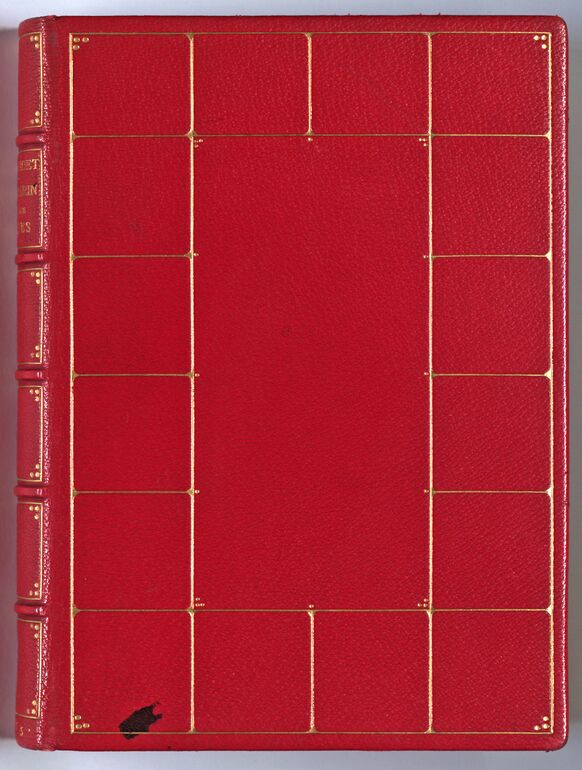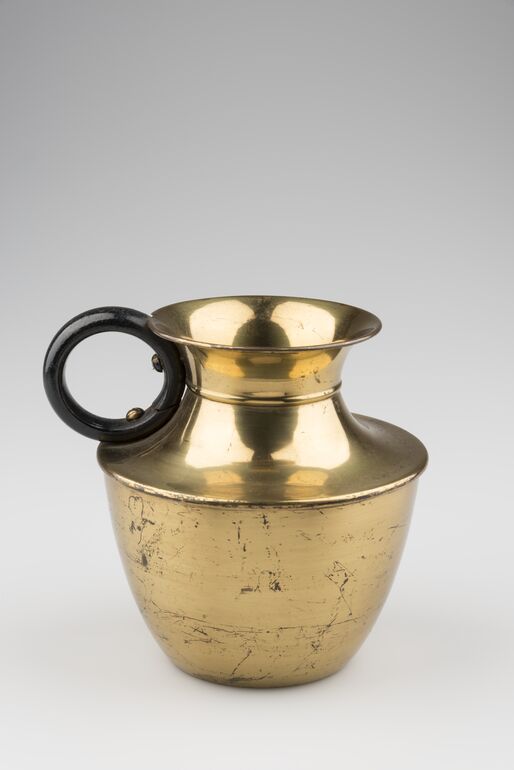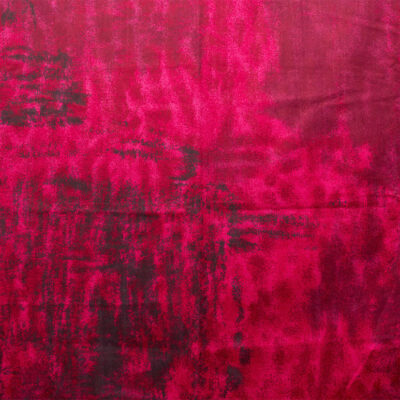Title
- Working Drawing of the Execution of a Mosaic Frieze for the Dining Hall of Stoclet House in Brussels: Part 9, Knight
Production
- : Kammerl am Attersee, 1911
- design: Gustav Klimt, Vienna, 1911
Period | Style | School
Subject
Measurements
- height: 197 cm
- width: 89.9 cm
Inventory number
- MAL 227
Acquisition
- purchase , 1961-03-24
Department
- Library and Works on Paper Collection
Inscriptions
- text on object: [Anweisungen für die Umsetzung:] OBEN / Größere weiße Fläche soll in weißem Email gemacht werden / die kleinen ganz weißen Formen des oberen Mittelfeldes / sollen ebenfalls in Perlmutter gemacht werden / 89,9 cm / Die Mehrzahl der weißen Formen in diesem und dem / gegenüberliegenden Feld sollen in Perlmutter ausgeführt / werden. Die Bleilinien der Seitenfelder sollen in Metall / getrieben werden. Alles Farbige soll in Emailtechnik ausgeführt / werden. Die glänzenden Metallflächen sollen poliert werden. / STOCLET SPEISEZIMMER SCHMALSEITE M 1:1
Superordinated Object
Description
-
Palais Stoclet (also known as the Stoclet House) in Brussels was planned between 1905 and 1911 by Josef Hoffmann in the style of the Vienna Secession and decorated by him and a great number of Wiener Werkstätte members, as well as others from that circle, in keeping with the ideal of the Gesamtkunstwerk. Not only the building
and the interior design, but in fact the entire decorating scheme is permeated by a synthesis of the three arts of painting, sculpture and architecture, wholly in keeping with the spirit of the Wiener Werkstätte. For the interior decorating, the best-known artists of the period around 1900 were called upon—including Carl Otto Czeschka,
Eduard Josef Wimmer- Wisgrill and Ludwig Heinrich Jungnickel. The commission to do the dining room walls went to Gustav Klimt. Klimt’s years of work on this project produced nine cartoons at a scale of 1:1 that were then realized as mosaics. The motif of a sweeping tree of life on the long side of the room is mirrored on the opposite wall; the Dancer (Expectation) corresponds to the Lovers (Fulfillment) across from her. The front end of the room contains the abstract figure of the Knight. For these friezes’ execution by the Wiener Werkstätte and the Wiener Mosaikwerkstätte [Vienna Mosaic Workshop], Klimt handwrote on the cartoons instructions for Forstner according to which only the finest materials—such as enamel, mother-of-pearl and gold leaf—were to be used. This work is among the few that Klimt did at a monumental scale, and with its recourse to Egyptian, Byzantine, and Japanese models, it represents the climax of his artistically mature output.
(Pokorny-Nagel, Kathrin)
See More:
-
working drawing, Working Drawing of the Execution of a Mosaic Frieze for the Dining Hall of Stoclet House in Brussels: Part 9, Knight, Gustav Klimt, MAK Inv.nr. MAL 227
-
https://mak-wp.711.at/en/collect/working-drawing-of-the-execution-of-a-mosaic-frieze-for-the-dining-hall-of-stoclet-house-in-brussels-part-9-knight_158510
Last update
- 24.09.2025



































